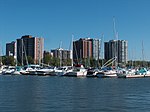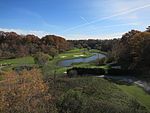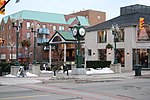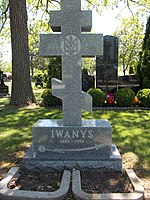Bronte GO Station

Bronte GO Station is a train station in the GO Transit network located in Oakville, Ontario, Canada. It is a stop on the Lakeshore West line and there is an adjacent bus loop for connecting local Oakville Transit bus routes. In September 2008 the station parking lot was expanded with a new entrance on Wyecroft Road. In January 2011, approximately 175 spaces were made available in the south lot which can be entered from Speers Road. When the project is completed the south lot will provide 300 parking spaces, with stairs and ramps to the platforms.A Bronte Station Master Plan was completed in 2013, with key recommendations to be coordinated with ongoing improvements. This included considering extending the east tunnel to the south side of the tracks to a relocated bus loop or improve existing west tunnel connections to the existing loop and add more bus bays. Improvements already started, and was completed by Spring 2016, which included repaving the south parking lot and the addition of 200 new spaces as well as upgrades to platform canopies and shelters.
Excerpt from the Wikipedia article Bronte GO Station (License: CC BY-SA 3.0, Authors, Images).Bronte GO Station
Speers Road, Oakville Bronte
Geographical coordinates (GPS) Address Nearby Places Show on map
Geographical coordinates (GPS)
| Latitude | Longitude |
|---|---|
| N 43.417222222222 ° | E -79.722222222222 ° |
Address
Speers Road 2103
L6L 5M2 Oakville, Bronte
Ontario, Canada
Open on Google Maps








